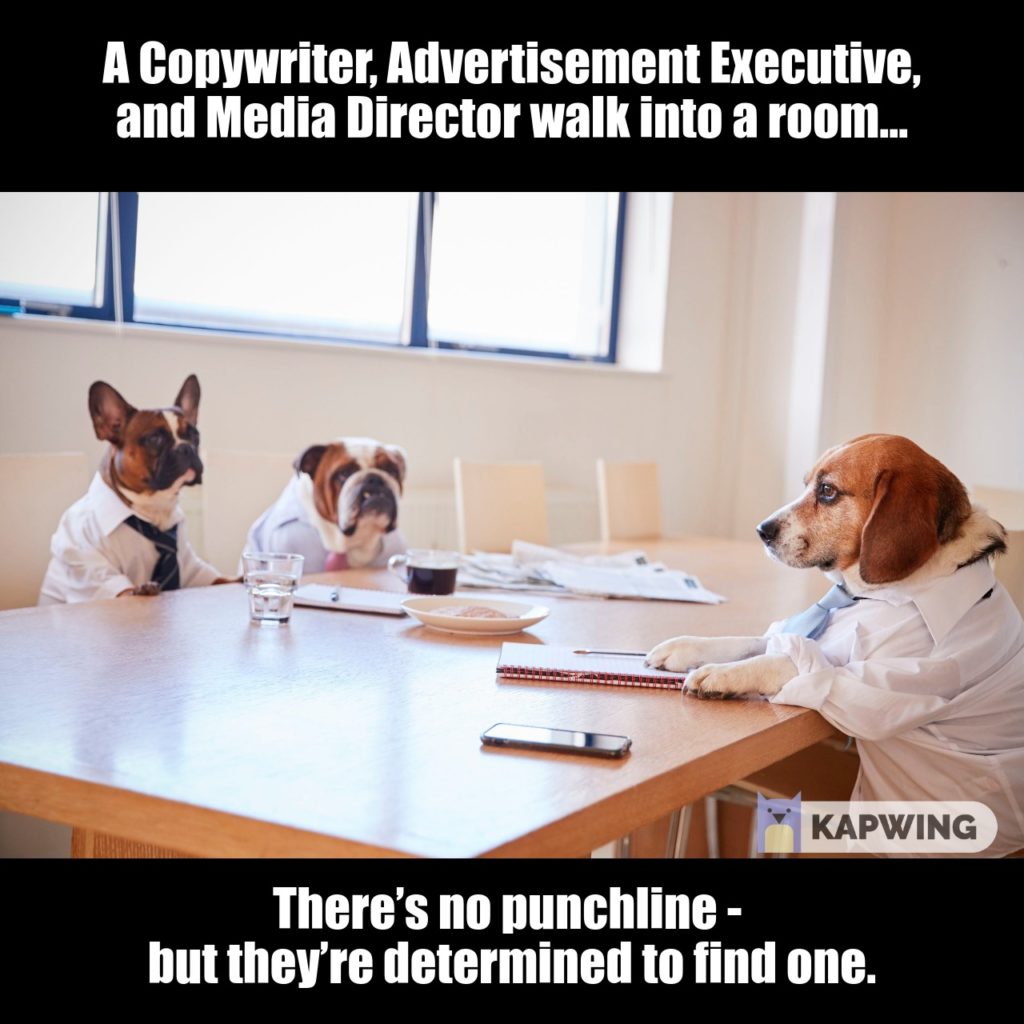
Stop me if you’ve heard this one before: A Copywriter, Advertisement Executive, and Media Director walk into a room. There’s no punchline- but they’re determined to find one.
Humour has been used in marketing and advertisements for ages. From silly sandwich boards to cheeky cartoons and satire commercials, humour has been used as a tool to help make a brand stand out from the crowd. Unsure about the effectiveness of this? Think of your favourite Superbowl ad – Got it? Yeah, we thought that one was funny too. Amazon’s superbowl Ad “Not Everything Makes the Cut” – knew the audience and used humour to show that Amazon knows Alexa doesn’t belong in everything.

Why is the use of humour in advertising so effective? There are a few reasons:
- It gets peoples’ guards down. Consumers don’t like feeling like they’re being sold to. Observe some of the most impactful ad campaigns out there and notice how they incorporate joy, silliness, and quirky bits into their storytelling. When there is humour involved, audiences become entertained, thereby removing their skepticism of the marketers’ intentions and opening them up to the messaging.
- It gets shared. Everyone loves a good joke, and most don’t mind sharing it. When consumers come across an advertisement that makes them laugh, they are more likely to bring it up in a positive discussion amongst their peers. Everyone can find pop-culture references they’ve picked up in time from some great marketing campaigns and normally there’s a punchline to be quoted. All marketers know that nothing beats word of mouth advertising.
- It demands a deeper understanding of your customer. Joke writing doesn’t come naturally for many people (no matter how many dudes on Tinder say they’re funny) but it can truly be an art form when executed properly. There is a deep psychology behind successful implementation of humour. It forces the joke developer to really get in the headspace of a target audience and understand their personas as they work to create a connection with them. Overall, joke writing will make you a better marketer in the end as it helps shape more understanding around your consumers’ needs, interests, and desires; enabling you to respond accordingly.
- It humanizes your brand. With the rapid development of A.I. in our market, we need to remember that there are skills that robots can’t do better than humans, such as appreciating laughter and knowing how to deliver and measure it. Binary code may look like “lol” but it can’t compute the results a creative personality could. Humour reminds consumers that your brand has personality, and a joy for life attached to it by not taking itself too seriously. Utilizing joke writing can help build a stronger connection between your audience and your brand as it makes you more relatable and builds trust.
What’s the number one rule in comedy? Timing. Like all good humour there is a time and a place for it. You need to read what’s going on in the market to understand when your consumers are open to jokes, especially depending on the category of service or product you provide. Worse than making the wrong joke at the wrong time, is the risk that you could offend some of your potential market audience, damaging relationships and bringing negative attention to your brand.
Choose to add thoughtful punchlines to your content responsibly; ensuring you don’t make epic marketing failures other organizations have had to fight their way back from. A good way to do so is to always run your concept through another party to see if it is funny to them because, well, what is funny to you may not be so funny to others. We are rarely our own target market.

When the time is right though, humour helps you build a space for your brand’s name within society’s cultural consciousness. Popular culture and societal milestones both share a space within our consciousness as consumers. With the amount of options in the market, make sure to find a connective reason for your brand to create a memorable impression surpassing functionality solely. Sparking joy is never a risky choice.
What did one marketer say to the other? You’ll have to check out Tenato’s other blogs to find out!

